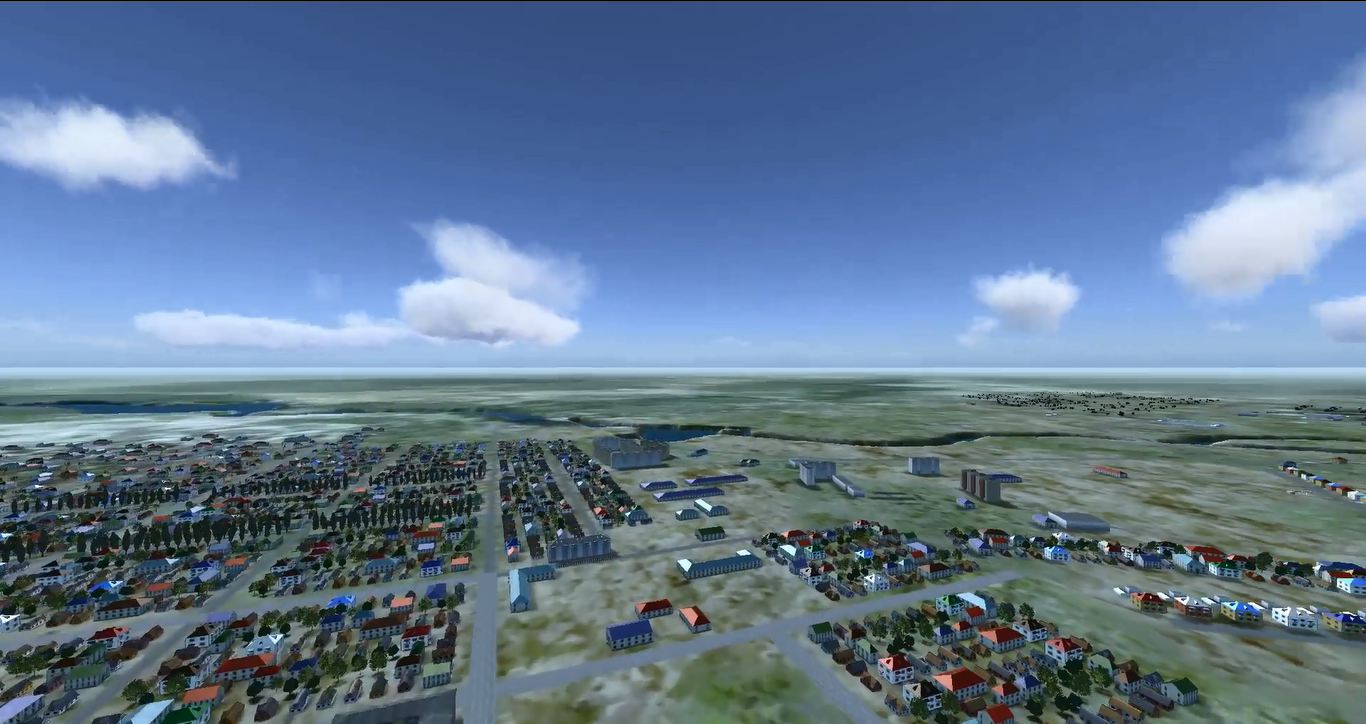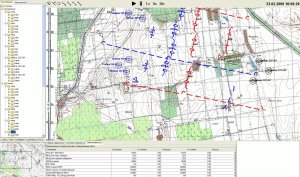Computer Based Trainings
As part of FMS and Air Traffic Control simulators development, we developed Computer Based Trainings (CBT).
Due to our architectural principles, same software is used both for Full Mission Simulators and Computer Based Trainings. So, we made less expensive training solutions based on low-fidelity hardware but still with high-fidelity software.
Software modules can be configured to work with hardware, with network over HLA or just simulate hardware and visualize it on computer display.
Here you can see flight of helicopter. So, gamepads are used here to control the flight, and helicopter devices are visualized on 2D view. But this code also is using with motion platform and hardware controls interactions
Computer Based Trainings are used for members of instructors’ team can play up to trainees as wingmans or some own or alien units.
They can be used also as cost-effective training solutions. As same to Full Mission Simulators high fidelity codebase is used for Computer Based Trainings, our customers can hold high quality exercises using same aerodynamics and on-board systems modelling as in Full Mission Simulators.
Our Command & Control simulator in fact is a network based Computer Based Training simulator with addition of some radio emulated voice hardware.
Core features of our Computer Based Trainings
Advanced simulation
- Real-time simulation for complex trainings of operating different machines or processes
- Development of driving and military ground machines simulators
Advanced flight simulation development
- Development of flight simulator software for teaching procedural and flight operations (turning on, driving, takeoff, landing, flight operating, manoeuvring, technical failures operating, firing, bombing, etc)
- Simulation of flight dynamics using physics principles, strong mathematical modelling, including aerodynamic modelling based on aircraft parameters. We have subject-matter experts for projecting and implementing such tasks.
- Modelling of atmospheric effects, weather, time-of-day and season conditions to train pilots to operate in different conditions (for example, such parameters as wind, temperature, turbulence, density, humidity, flying on low altitudes affect the aerodynamics of a flight; rain, snow, fog, clouds, sun shine, time-of-day light visual effects are modeled to train crew to operate in different visual conditions)
Staff Officer Tactical Trainers, C&C Simulators development
- Development of Staff Officer Tactical Trainers, C&C Simulators: planning mode, what-if analysis of tactical decisions, on-map drawings, support of different military branches etc
Network & Interoperability
- Network interactions with other simulators or simulator parts using HLA 2010 Evolved protocol to train aircrew or for training of formation flights and execution of formation combat missions. Support of integration with other simulators for performing military cross-branches trainings with different types of simulators.
- Support of HLA integration with air traffic control simulation to teach pilots and dispatchers (or air control officers) to work together.
Instructor operating development
- Instructor operating stations development where an instructor can monitor flight and mission tasks operating, state of on-board devices, environment in 3D and on the maps, introduce device malfunctions, etc. Also monitoring soft for a media classroom showing the current training in different views. Multi monitor workstations are used for providing such information.
- Recording of all distributed activities during simulation for debriefing and after-action review across distributed environment with the possibility to replay the simulation from any point. Action controls for starting, pausing or stopping the simulations.
- Development of mission and environment editors for the preparation of different training. Modelling of airport facilities and environment to teach pilots to operate with them
Hardware simulation
- Simulation of on-board systems based on electrotechnical schemes. Our electro-technical engineers can describe an on-board devices model, and implement it with our developers. We can implement inner logic, interactions with hardware devices, visualization of devices on Instructor Operating Stations we can implement for a trainee to be able to study working with on-board systems effectively
Geospatial development
- Geospatial related development: using a map for dynamic air and ground environment visualization, for editing environment etc
3D, terrain, AI and synthetic environments
- Realistic modelling of a real-world terrain area with automatic approach, using elevation data, digital vector maps, terrain imagery and 3D models typical for region or automatic terrain generation according to the customer’s needs
- Rich 3D visualization development of huge terrain areas in hundreds of thousands of square kilometers with correspondence of this area to the real world (same elevation, land types, objects etc)
- Virtual world and AI simulation development. Distributed algorithm that calculates movements and actions of all the units according to the tasks of mission editor and their parameters. AI simulates complex patterns like decision making, aim selection, shooting etc. We take into account lots of parameters when developing a virtual world: parameters of each ground or air units (configurable into editors), relief, land types, movement capabilities etc.True physics and ballistic principles are used in the simulation core. nVidia PhysX is used for high-performance of physics-related operations
Air traffic related simulation
- Virtual air traffic modelling using flight dynamic principles and with terrain following
- Modelling of airport related environment
- Radar work simulation with visibility zone calculation, azimuth grid and radar scan sweeps
Air Traffic Control Simulator screen sample





